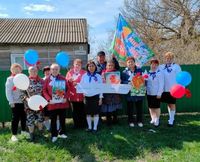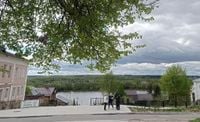May 1, 2025, marks the celebration of the Holiday of Spring and Labor, an international event observed in over 140 countries. This significant day, rooted in the labor movement, has evolved from its historical origins into a vibrant celebration of workers' rights and springtime renewal.
The history of May Day dates back to the mid-19th century, when workers in Australia initiated mass protests demanding an eight-hour workday. This movement quickly spread to Canada and the United States, culminating in a pivotal demonstration in Chicago on May 1, 1886. Unfortunately, this event ended in violence, with clashes between demonstrators and police resulting in bloodshed. In response to these events, the Congress of the Second International in Paris, held in July 1889, declared that May Day would be commemorated annually in memory of those who lost their lives fighting for workers' rights.
In Russia, the first May Day celebrations took place in 1891 in St. Petersburg. By 1918, the government of the Russian Soviet Federative Socialist Republic (RSFSR) officially designated May 1 as a state holiday known as International Day. The holiday underwent several name changes, becoming "International Workers' Solidarity Day" in 1972 and later the "Holiday of Spring and Labor" in 1992. Until 2005, May 1 and 2 were recognized as non-working holidays in Russia, but since then, only May 1 remains a public holiday.
Alongside the labor celebrations, May 1 also marks the Day of Birth of the Postal Mark. This year, the postal mark celebrates its 185th anniversary. The concept of postage stamps was pioneered by Rowland Hill, an English teacher who sought to reform the postal system in the 1830s. On May 1, 1840, the first batch of postage stamps featuring Queen Victoria was released, revolutionizing mail services. In Russia, postage stamps were introduced in late 1857 and officially began to be used from January 1, 1858.
In addition to these historical observances, various cultural events are planned to celebrate the Holiday of Spring and Labor. From May 1 to May 4, 2025, the Rybnovsky Central Library will host the "May Day" action, where visitors can learn about the holiday's history and receive postcards. In the Belorechensky rural House of Culture, a military-patriotic game titled "Zarnitsa" is set to engage participants.
The Museum-Estate of Academician I.P. Pavlov in Ryazan will feature an exhibition on Pushkin's card, while the Kasimov House of Culture will present a Paschal concert on May 1. On Sovetskaya Street, the "Melodies of Balconies" festival will showcase performances by the Ryazan Chamber Orchestra and local bands, bringing music and joy to the community.
On May 2, an art performance named "Pulse of Time" is scheduled near the shopping arcades, accompanied by concerts, creative master classes, and activities for children. Visitors will have the opportunity to purchase souvenirs celebrating the city's rich cultural heritage.
As the celebrations continue, May 3 will feature a Day of Pushkin's Tales along the Naberezhnaya, with storytelling and theatrical performances. A Dance Festival will also take place at the Palace of Culture, alongside concerts and theatrical presentations across the streets and squares of Ryazan.
Moreover, May 1 is also recognized as International Global Love Day, a celebration that encourages individuals to express love and compassion towards one another. Established in 2004 by various officials in the USA and Canada, the day aims to inspire people to embrace love and harmony, promoting a peaceful coexistence free from conflict.
Another notable observance on this day is the International Day of Healing Massage, which has been celebrated worldwide since 2014. This day aims to raise awareness about the benefits of therapeutic massage for health and well-being. Therapeutic massage is recognized for its effectiveness in treating various ailments, from joint and muscle injuries to promoting relaxation and improving overall health.
In recent years, the day has also been associated with the planting of sunflowers, initiated by a group known as the "Brussels Farmers" in 2007. This grassroots movement encourages people to plant sunflowers as a symbol of environmental awareness and community action, embodying the spirit of thinking globally while acting locally.
As the world comes together to celebrate the Holiday of Spring and Labor, it is essential to reflect on the historical significance of this day and its evolution into a celebration of life, love, and labor. The events lined up in various regions serve as a reminder of the ongoing struggle for workers' rights and the importance of community solidarity.
In conclusion, May 1 is not just a day off work; it's a powerful reminder of the progress made in labor rights and the collective efforts that continue to shape our societies. Whether through cultural events, historical commemorations, or simply spending time with loved ones, this day invites everyone to celebrate the spirit of unity and resilience.


